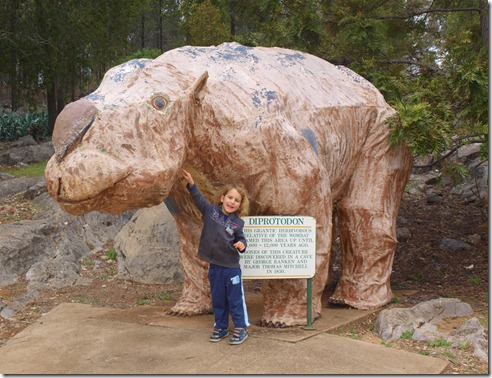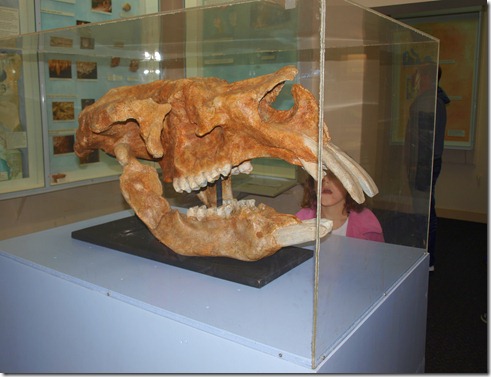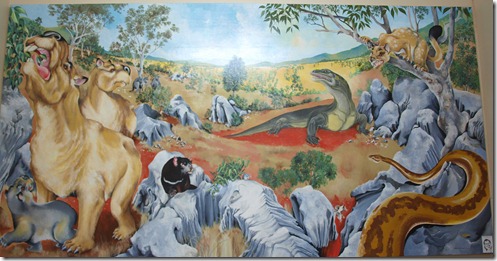We decided to follow the road less travelled for our journey between Parkes and Dubbo and take the more eastern road stopping off at Wellington.

Whilst not as well known as the more famous area of Jenolan, Wellington is also home to caves.
It was also a bustling hive of activity, filled with Mega Fauna some 20 000 – 30 000 years ago, which means that today it is a fabulous place to find bones and fossils.
The Diprotodon (meaning two forward teeth), was one such creature that roamed the area. In fact it is often referred to as the ‘giant wombat’ and is the largest known marsupial to have ever lived.

Inside the small visitors centre, they have dedicated the space to the archaeological finds from the area.
Fairy Princess is blown away by the size of the skull from the ‘giant wombat’.
There are many other fossil finds showcased within the visitor centre.

Megalania, referred to as the ‘giant lizard’ was in fact a very large goanna or monitor lizard.
Just before the caves entrance is this large, striking, life like creature that unexpectedly greets you as you walk up the hill.

An artists rendition of what the area may have looked liked during the Pleistocene Period (16 000 – 50 000 years ago).
Fossils of Mega Fauna such as, giant wombats, giant kangaroos, giant tassie devils, giant lizards, giant marsupial lions and giant bandicoots, have all been found in caves in the Wellington area.
Quite sad really to think that these animals once walked with humans, but are now extinct. The debate is still on surrounding their extinction, but many do feel that humans were the ultimate cause of extinction, probably from hunting and over burning of the landscape.






















0 comments:
Post a Comment
Make my day, leave a lovely comment :-)